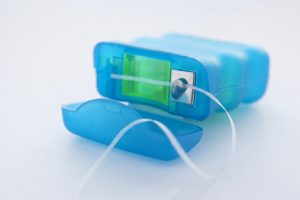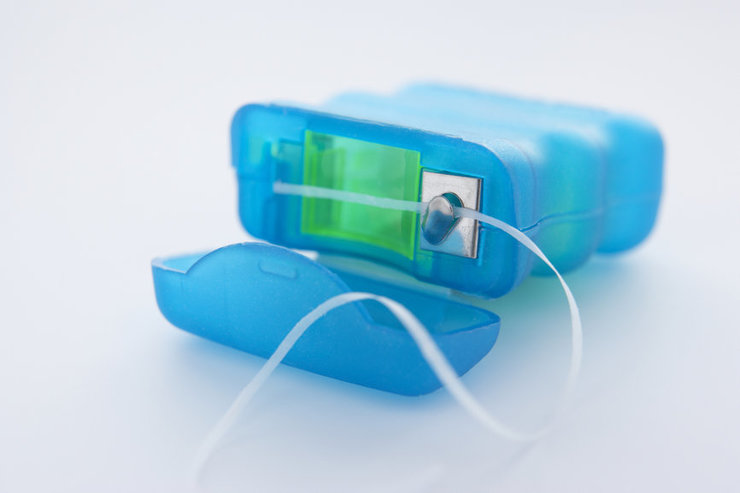As an Amazon Associate we earn from qualifying purchases.
 Flossing is one of those personal hygiene habits that everyone, except for dentists of course, try to avoid. Flossing is complicated; it’s uncomfortable, and it takes a lot of time to do properly. But, flossing is one of the most important things you can do to protect your smile and also your health as a whole. One of the most important skills you can learn is how to floss properly. I’ve posted some tips below on choosing the right floss and how to floss those hard to reach areas.
Flossing is one of those personal hygiene habits that everyone, except for dentists of course, try to avoid. Flossing is complicated; it’s uncomfortable, and it takes a lot of time to do properly. But, flossing is one of the most important things you can do to protect your smile and also your health as a whole. One of the most important skills you can learn is how to floss properly. I’ve posted some tips below on choosing the right floss and how to floss those hard to reach areas.
Contents
Why is Flossing Important for Oral Hygiene?
Flossing is not just for removing embarrassing food that has become stuck in your teeth. Flossing is very important for overall hygiene because it accounts for 40 percent of the effort required to remove plaque from your teeth. Flossing is especially important in the back of your mouth, which is often left neglected. Most of the tooth decay that occurs is found in the back of the mouth and in areas that you cannot reach with your toothbrush alone. Flossing will not only keep your mouth free of plaque and your breath fresh, but it is one of the best ways to avoid painful gum diseases like gingivitis as well as tooth decay.
How Do You Choose Between the Types of Dental Floss?
Choosing the right dental floss for your teeth can make it easier for you to floss correctly. There are several different types of dental floss including glide floss, floss sticks, gum floss and unwaxed floss. Choosing the shape of your dental floss is important especially if you have teeth that are very close together or very far apart. If your teeth are very close together, try a waxed floss or glide floss, which may make it easier to move. If you tend to shred your floss, there are several options available, and you should look for floss that claims to be shred resistant. If you have particularly difficult teeth, there is even a floss made of Gore-Tex. If you have a small mouth or struggle with the dexterity required for flossing, you can try to use a floss stick. Floss sticks are not as effective as flossing with your hands, but they are a good alternative compared to not flossing at all.
When Should You Floss?
Dr. Walter Bretz of New York University College of Dentistry suggests that you should floss in the morning after eating as well as at night before you go to sleep. You should try to do it at the same time every day so that you can form a habit. Plaque build up is an everyday occurrence, and it requires everyday maintenance.
How Do You Floss Properly?
Learning how to floss properly is important because flossing incorrectly can cause damage to your gums. The NHS website recommends that you use a piece of floss about 18-inches long. You should wrap it around your middle fingers and hold onto it between your thumb and forefinger so that the distance is only 1-2 inches. Make sure you use it gently as you guide the floss around and in between the teeth as well as under your gum line. When you move the floss into your teeth, you should move it in a sawing motion rather than pushing it through. This will prevent damage to delicate tissues like your gums. Move the floss so that you scrape away from your gum line to remove plaque and bacteria. It is also important to floss between every single tooth. If you haven’t quite figured out how to floss back teeth, you can try using a floss holder, which may be easier to maneuver. There are several tools available to you if you lack the coordination to floss your back teeth including y-shaped flossers, small brushes, rubber tips and interdental cleaners.
How Do You Floss With Braces?
Learning how to floss with braces is essential, and your orthodontist will usually show you each time you have your braces changed. However, doing it at home on your own is a different story. Daily flossing becomes even more essential when you have braces because you are more likely to have food or other debris trapped in your teeth, bands or wires when you wear braces. The best floss to use if you have braces is a waxed floss because it is less likely to get caught in your braces. Flossing with braces is similar to flossing without braces except that you will need to thread the floss under the wire each time you move to a new tooth. This can make it feel very time-consuming and tedious. However, once you practice, threading the floss becomes substantially easier. If you find it very difficult to pass the floss through the wire, you can employ the help of a floss threader. This may be especially useful for children, as they do not have the patience and coordination required to floss with braces. When dealing with young children, it is great for their parent or guardian to take an active role in helping them floss their teeth so that they have healthy smiles when their braces come off.
For an in-depth guide about flossing with braces check this YouTube video.
How Do You Choose Between Floss and a Waterpik?
Most dentists consider floss to be the tool of choice for cleaning in between your teeth. Since an oral irrigator, known as a Waterpik, became available for home purchase, however, many people have been leaning towards this approach to dental hygiene. A Waterpik helps to clean your mouth by sending a stream of water at your teeth, which might help get rid of stubborn food particles. It is easier to use than floss, and it usually does not result in bleeding, unlike floss. A Waterpik is a great tool for people who have gum disease, too because it removes bacteria from areas that floss can’t reach. However, it does not remove plaque in the same way that flossing and brushing do, and the Mayo Clinic does not encourage you to use a Waterpik as a replacement for traditional brushing and flossing.
Flossing is an important part of your daily health and by learning how to floss properly, you can protect your smile for many years to come.
Amazon and the Amazon logo are trademarks of Amazon.com, Inc, or its affiliates.

